Patagonia to Hustisford
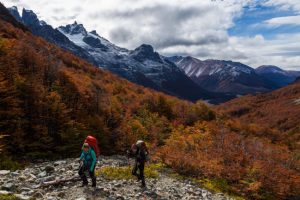 If you are looking for that special winter getaway, Chile might be just the ticket. The Route of Parks trail spans across 1,740 miles from Puerto Montt all the way to Cape Horn.
If you are looking for that special winter getaway, Chile might be just the ticket. The Route of Parks trail spans across 1,740 miles from Puerto Montt all the way to Cape Horn.
Sparked by the recent donation of 408,000 hectares of private conservation land by Tompkins Conservation, the Chilean government announced that it will convert 2 million hectares of conservation reserve land into national park land. Combined with the Tomkins donation and existing national park property, the new Patagonian Route of Parks trail stitches together a network of national parks that occupy around 11.5 million hectares.
Douglas and Kristine Tompkins made their fortune in outdoor apparel, founding both North Face and Esprit. They created Tomkins Conservation and began buying up land for conservation in the 1990s. Tomkins Conservation made the donation last year, following the accidental death of Douglas Tomkins kayaking the Patagonia in 2015.
While I do not usually post about outdoor recreation, this story is different. The Patagonian Route of Parks not only created a trail for hikers and backpackers, but a vital corridor for wildlife.
Meanwhile back in Wisconsin
Fragmentation is second only to habitat loss as threats to rare plants and animals. In Wisconsin, this plays out as small prairie remnants nestled along old town road right-of-ways, railroad corridors and the forgotten corners of early graveyards. Minute micro habitats where a tiny number of native plants, as well as the insects and animals that depend on them, hang onto a tenuous existence.
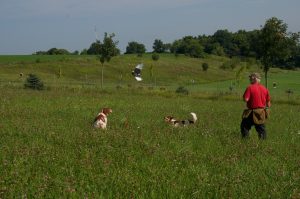
An increasing number of private landowners are deciding to manage part of all of their land for conservation. Small restored prairies are showing up in areas where once they dominated the landscape. Woodland owners are investing great effort to thin over-mature woodlands and clear invasive shrubs that a generation ago chocked out grasses and wildflowers.
Staying connected
While the work and money these landowners are plowing back into their land is vital to conserve and protect Wisconsin, those efforts cannot by themselves same many of the species that are heading for a quite death. These islands of habitat need to be connected.
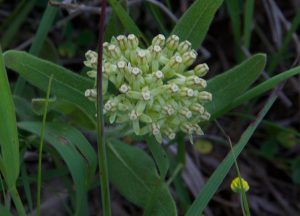 Take for example the whirled milkweed. This tiny member of the milkweeds, grows barely a foot tall. It spreads through rhizomes into patches thirty feet or more across. However, whirled milkweed does not self-pollinate. That means that pollen from stems in the same clone must be transported to flowers on a different clone in order to pollinate those flowers and produce seed.
Take for example the whirled milkweed. This tiny member of the milkweeds, grows barely a foot tall. It spreads through rhizomes into patches thirty feet or more across. However, whirled milkweed does not self-pollinate. That means that pollen from stems in the same clone must be transported to flowers on a different clone in order to pollinate those flowers and produce seed.
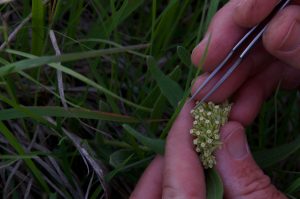 As farms and the equipment got bigger, fences were removed. Less productive land was also worked up for cultivation. This reduced that places where the Whirled milkweed could grow.It also isolated the few remaining populations that had been hanging on. These plants can live for thirty years of more. However, without cross pollination, the few remaining plants will eventually die without producing seed for new generations.
As farms and the equipment got bigger, fences were removed. Less productive land was also worked up for cultivation. This reduced that places where the Whirled milkweed could grow.It also isolated the few remaining populations that had been hanging on. These plants can live for thirty years of more. However, without cross pollination, the few remaining plants will eventually die without producing seed for new generations.
The solution to the problem is obvious, we need to connect fragmented islands of habitat. These do not need government to set aside vast expanses of public land to make that happen. As private landowners, we can work together to protect our natural heritage. Working together, neighbor to neighbor, we can make a difference.
Maintaining our outdoor traditions means ensuring we have a strong habitat where wildlife can survive long-term. This is called resilience, which comes from keeping as many pieces of the puzzle as we can.
Better together
So what can you do? None of us are billionaires who can purchase hundreds of thousands of acres. We can, however, walk next door and talk to with the folks who live around us. That marsh stretching a half mile south across the next two properties is more valuable for waterfowl if you work with your neighbors.
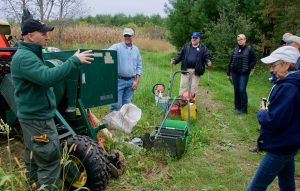
Together, we cans share equipment, labor and knowledge to increase the impact our conservation work has. This is especially important when taking on tough invasive species like buckthorn, garlic mustard or phragmites. Increasing waterfowl production will be much easier if you can get those two neighbors upstream to work with you.
Restoring and maintaining the natural heritage of our state is too big for individual landowners to fix. Government cannot maintain the land it owns, so they can only be very limited partners. Neighbor-to-neighbor, is the only way we get back the quail and ruffed grouse. Working with neighbors is the only way to ensure our woodland remain clear of buckthorn and garlic mustard. A shared vision is the best way to return waterfowl production to that marsh seemingly lost to cattail and phragmites.
It takes time to make these things happen, but there is no time like right now to go for a walk with your neighbor.
